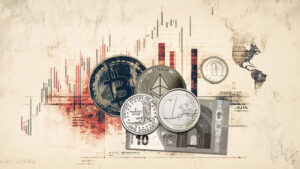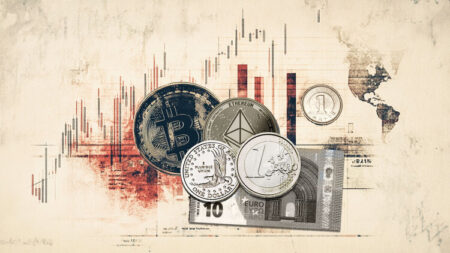- The US ISM Services PMI is expected to improve a tad in August.
- The US services sector should remain in the expansionary territory.
- Speculation of two rate cuts from the Fed this year remains on the rise.
On Thursday, we’ll get the latest read on the US services sector when the Institute for Supply Management publishes its August Services PMI. Economists think the index will tick up to 51 from July’s 50.1. If they’re right, that would be the third month in a row the sector has grown, another reminder of its staying power and a small lift for confidence in the broader economy.
Still, the details from July weren’t all upbeat. Hiring momentum slipped, with the ISM Employment Index dropping back into contraction at 46.4. New orders also lost a bit of steam, easing to 50.3, which hints that demand may be cooling. Despite the steady growth, the rising Prices Paid Index to 69.9 highlights the persistent inflation pressures.
What to expect from the ISM Services PMI report?
Inflation in the US is still running hotter than the Fed’s 2% target, and that keeps policymakers uneasy, especially with the full effects of recent tariffs yet to filter through the economy.
The latest Personal Consumption Expenditures (PCE) report underscored this point. Core inflation, which strips out food and energy, rose 2.9% YoY in July, up from 2.8% in June and a touch higher than most forecasts. Headline PCE held steady at 2.6% annually, showing little sign of easing.
Against that backdrop, an ISM Services PMI that lands in line with expectations probably won’t move the US Dollar much. It would simply confirm the picture of an economy that’s still resilient but still wrestling with sticky price pressures. A softer-than-expected print, though, could shake confidence and see investors trim their USD holdings on fears that growth is losing momentum.
When will the ISM Services Purchasing Managers Index report be released, and how could it affect EUR/USD?
The Institute for Supply Management (ISM) will publish the Services Purchasing Managers Index (PMI) on Thursday at 14:00 GMT.
Pablo Piovano, Senior Analyst at FXStreet, notes that renewed selling pressure could first drag EUR/USD down to a weekly floor at 1.1574 (August 27), prior to its monthly low at 1.1391 (August 1). A break below the latter, he says, would put the late-May trough at 1.1210 back on the radar.
On the flip side, if the pair regains strength, it could retest the August ceiling at 1.1742 (August 22), seconded by the late-July high at 1.1788 (July 24), with the 2025 peak of 1.1830 not far behind. Clearing that zone, Piovano argues, could open the door to a run toward the psychologically important 1.2000 mark.
Overall, he adds, as long as EUR/USD stays above its 200-day Simple Moving Average at 1.1045, the broader constructive outlook for the pair remains intact.
Economic Indicator
ISM Services New Orders Index
The ISM Non-Manufacturing PMI released by the Institute for Supply Management (ISM) shows business conditions in the US non-manufacturing sector, taking into account expectations for future production, new orders, inventories, employment and deliveries. It is a significant indicator of the overall economic condition in the US. The ISM Services New Orders Index represents business sentiment regarding future market conditions. A result above 50 is positive (or bullish) for the USD.
Read more.
US Dollar FAQs
The US Dollar (USD) is the official currency of the United States of America, and the ‘de facto’ currency of a significant number of other countries where it is found in circulation alongside local notes. It is the most heavily traded currency in the world, accounting for over 88% of all global foreign exchange turnover, or an average of $6.6 trillion in transactions per day, according to data from 2022.
Following the second world war, the USD took over from the British Pound as the world’s reserve currency. For most of its history, the US Dollar was backed by Gold, until the Bretton Woods Agreement in 1971 when the Gold Standard went away.
The most important single factor impacting on the value of the US Dollar is monetary policy, which is shaped by the Federal Reserve (Fed). The Fed has two mandates: to achieve price stability (control inflation) and foster full employment. Its primary tool to achieve these two goals is by adjusting interest rates.
When prices are rising too quickly and inflation is above the Fed’s 2% target, the Fed will raise rates, which helps the USD value. When inflation falls below 2% or the Unemployment Rate is too high, the Fed may lower interest rates, which weighs on the Greenback.
In extreme situations, the Federal Reserve can also print more Dollars and enact quantitative easing (QE). QE is the process by which the Fed substantially increases the flow of credit in a stuck financial system.
It is a non-standard policy measure used when credit has dried up because banks will not lend to each other (out of the fear of counterparty default). It is a last resort when simply lowering interest rates is unlikely to achieve the necessary result. It was the Fed’s weapon of choice to combat the credit crunch that occurred during the Great Financial Crisis in 2008. It involves the Fed printing more Dollars and using them to buy US government bonds predominantly from financial institutions. QE usually leads to a weaker US Dollar.
Quantitative tightening (QT) is the reverse process whereby the Federal Reserve stops buying bonds from financial institutions and does not reinvest the principal from the bonds it holds maturing in new purchases. It is usually positive for the US Dollar.
Read the full article here
















